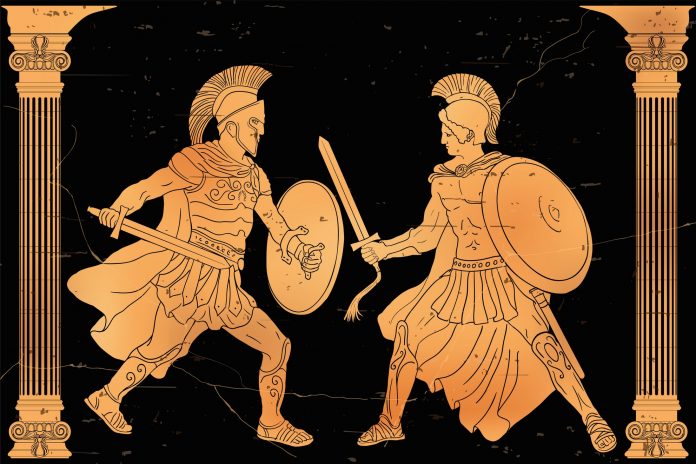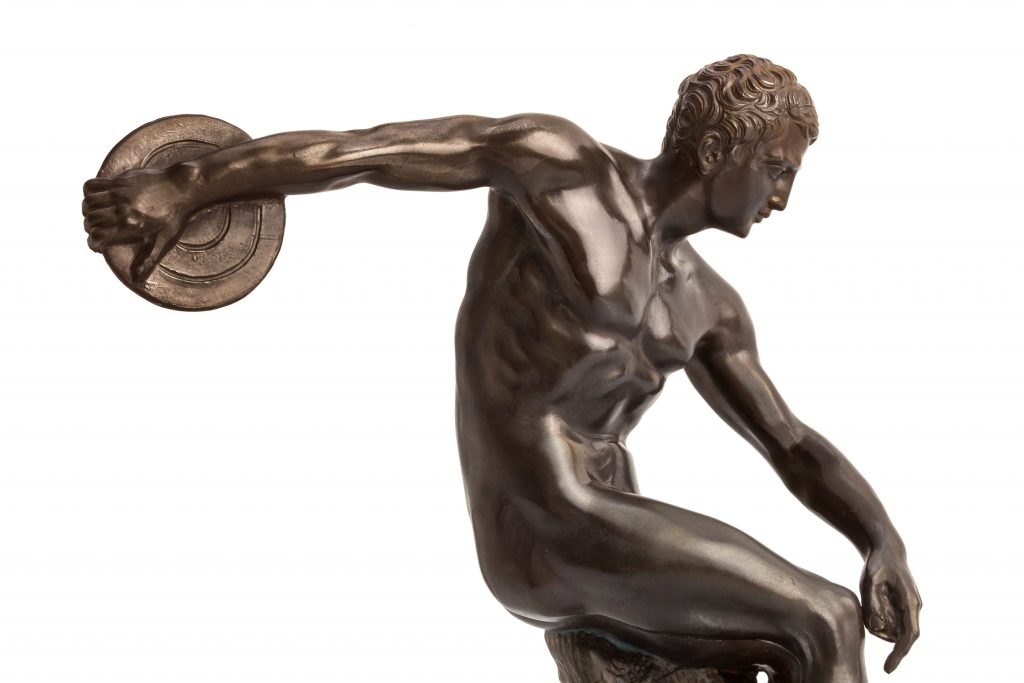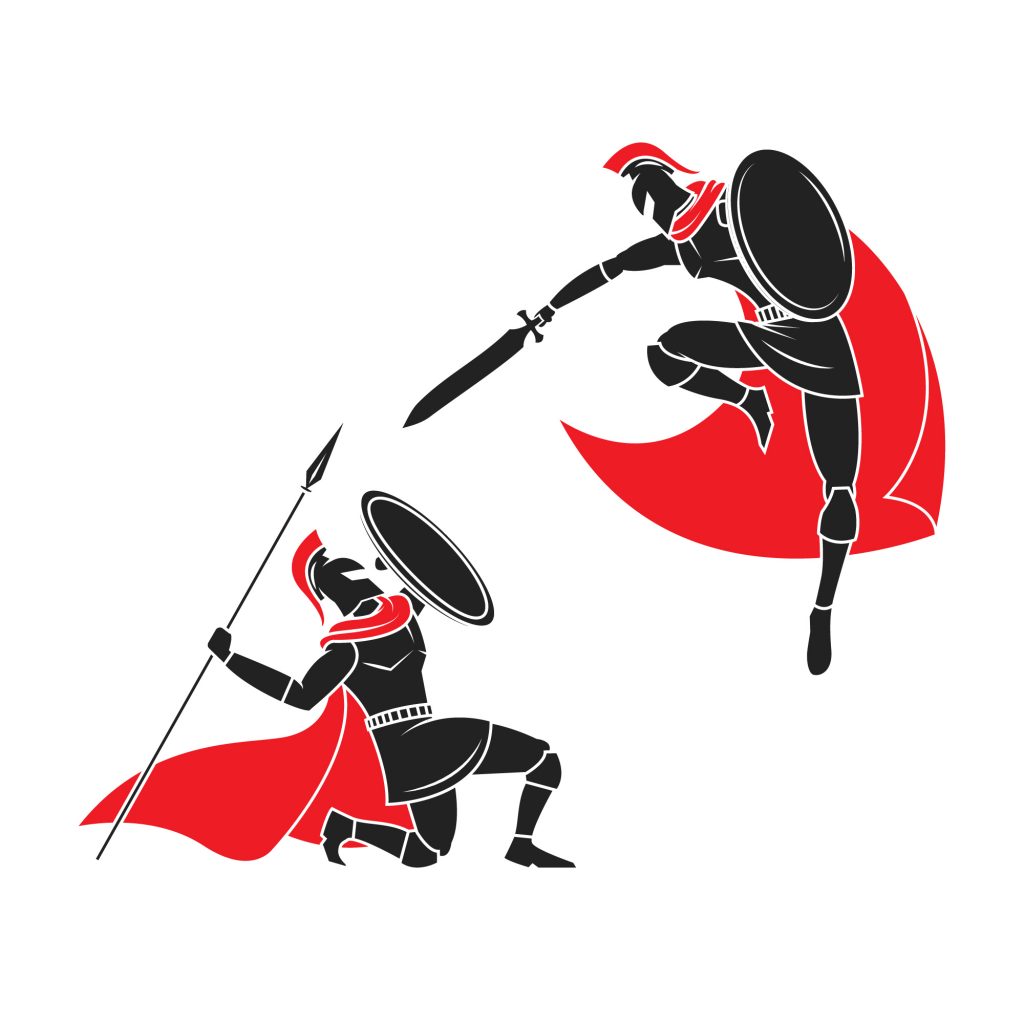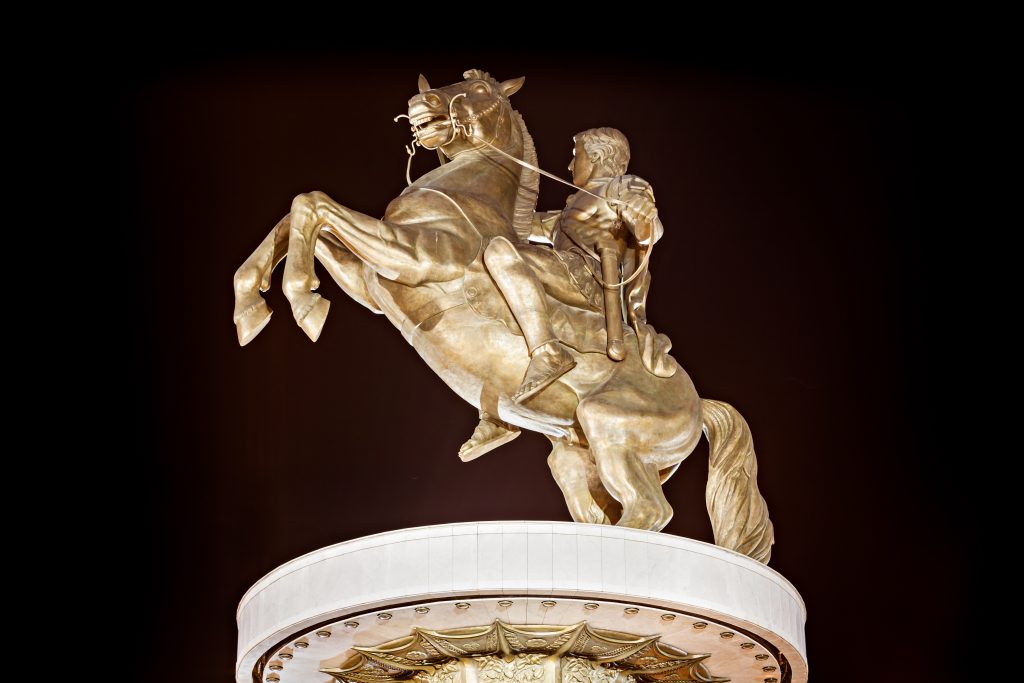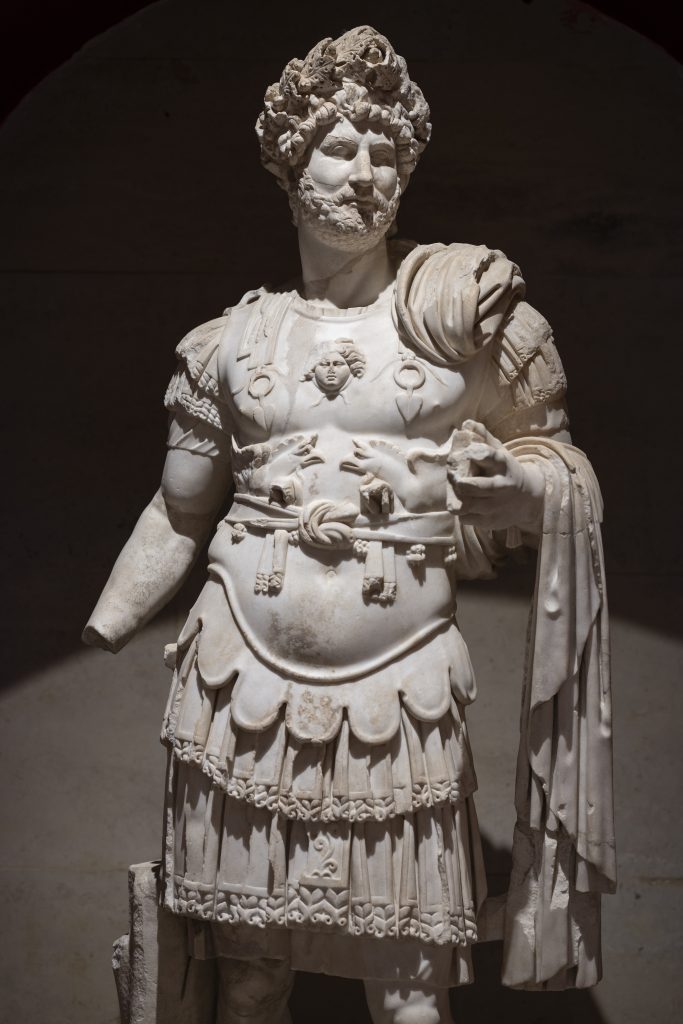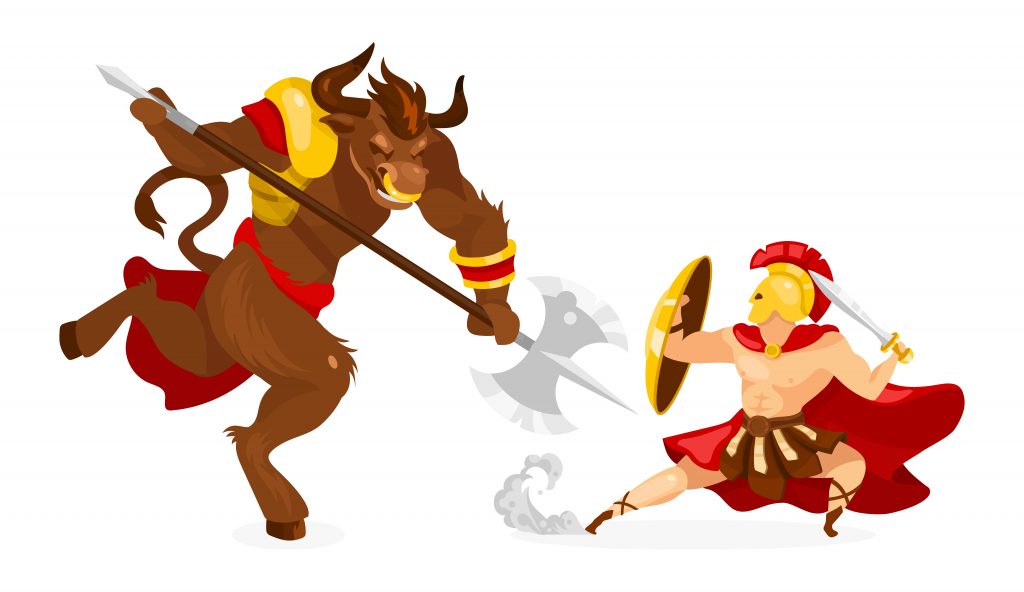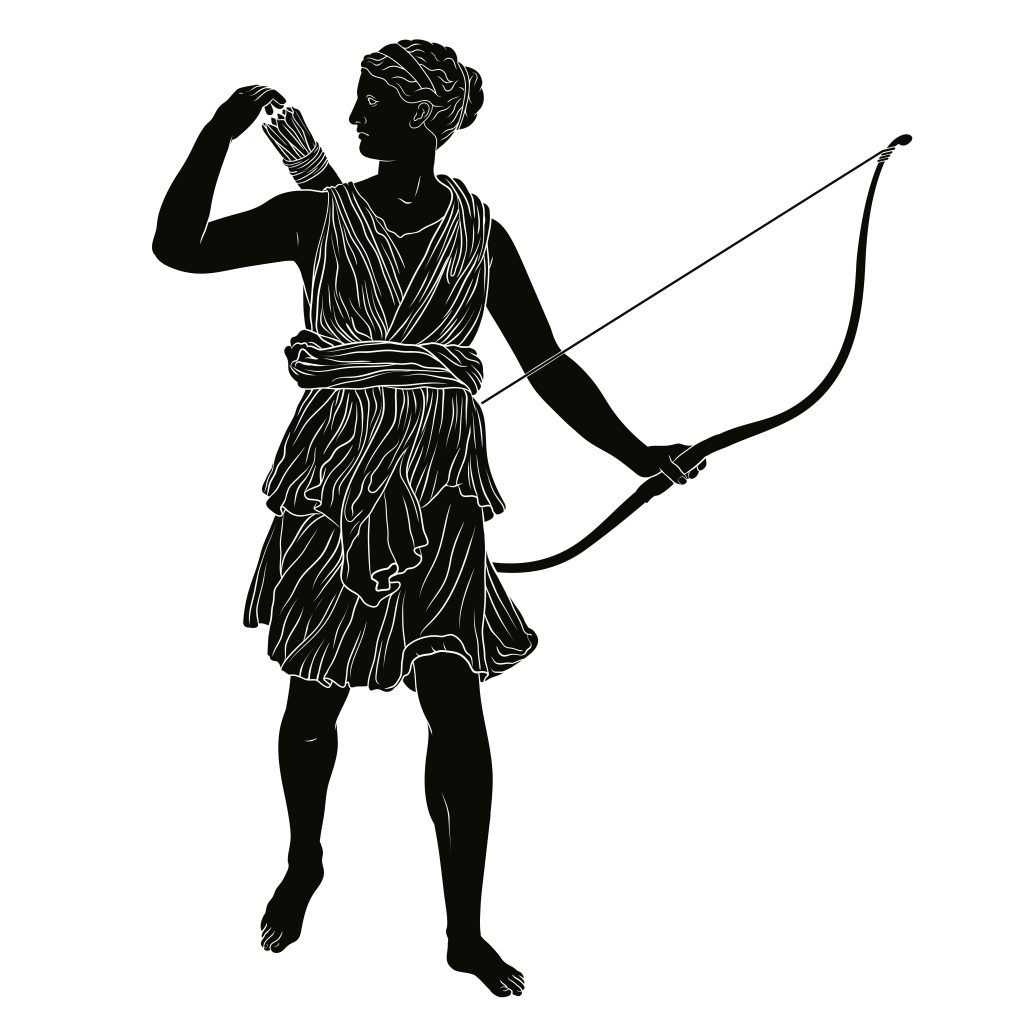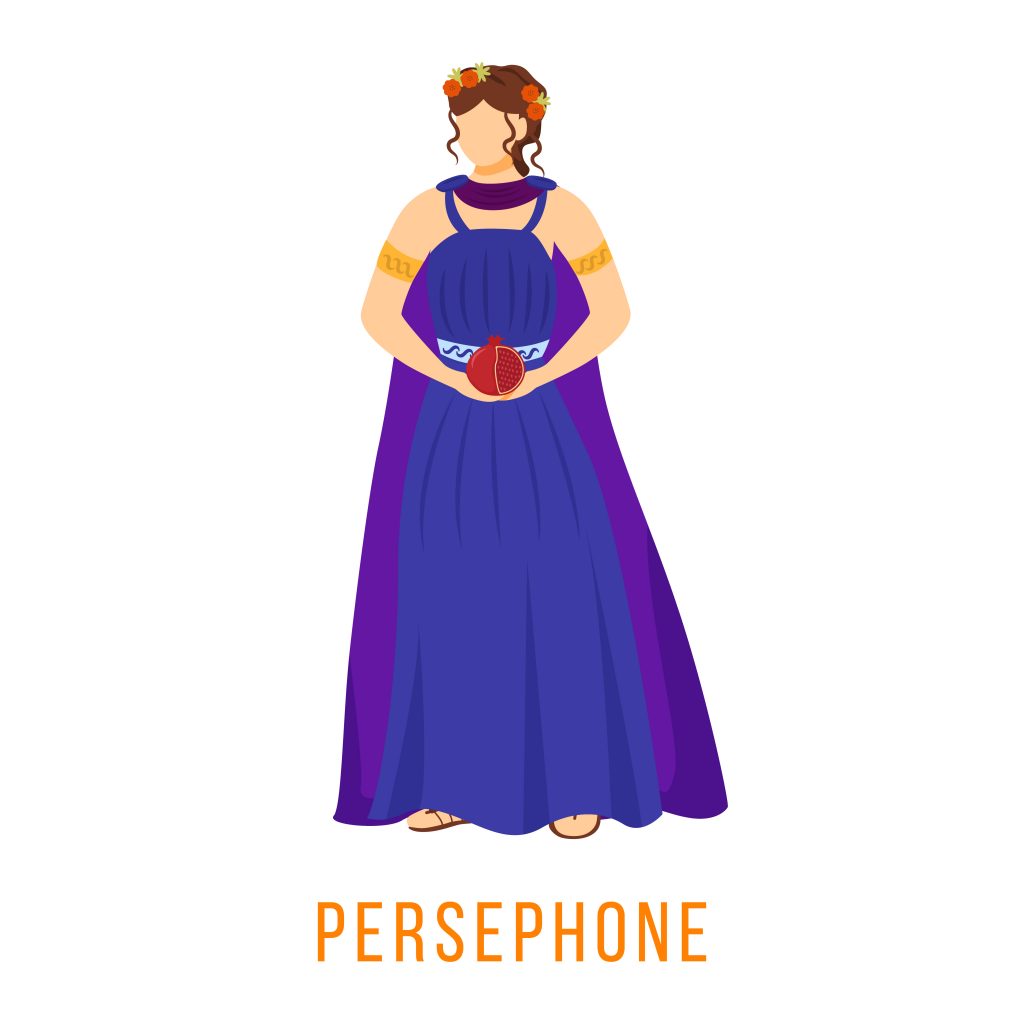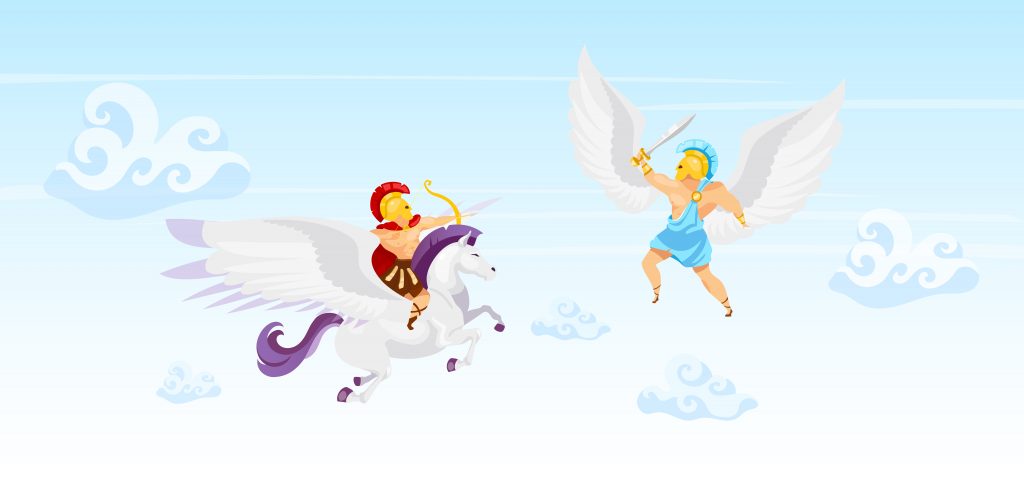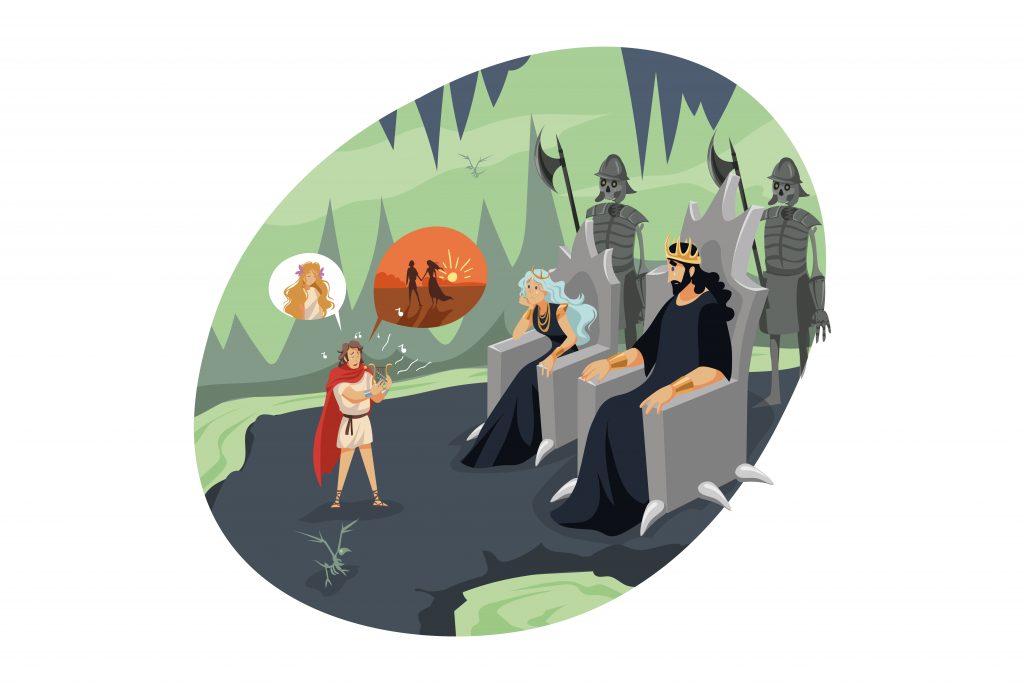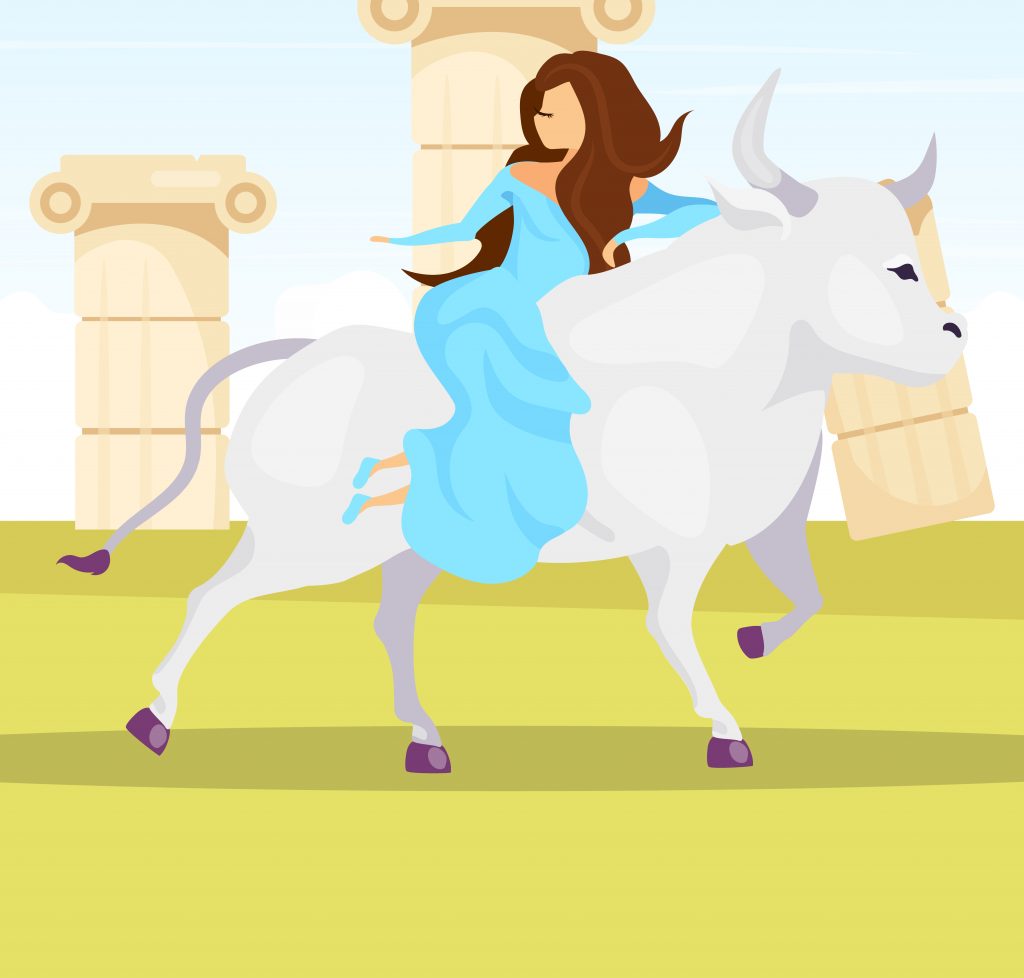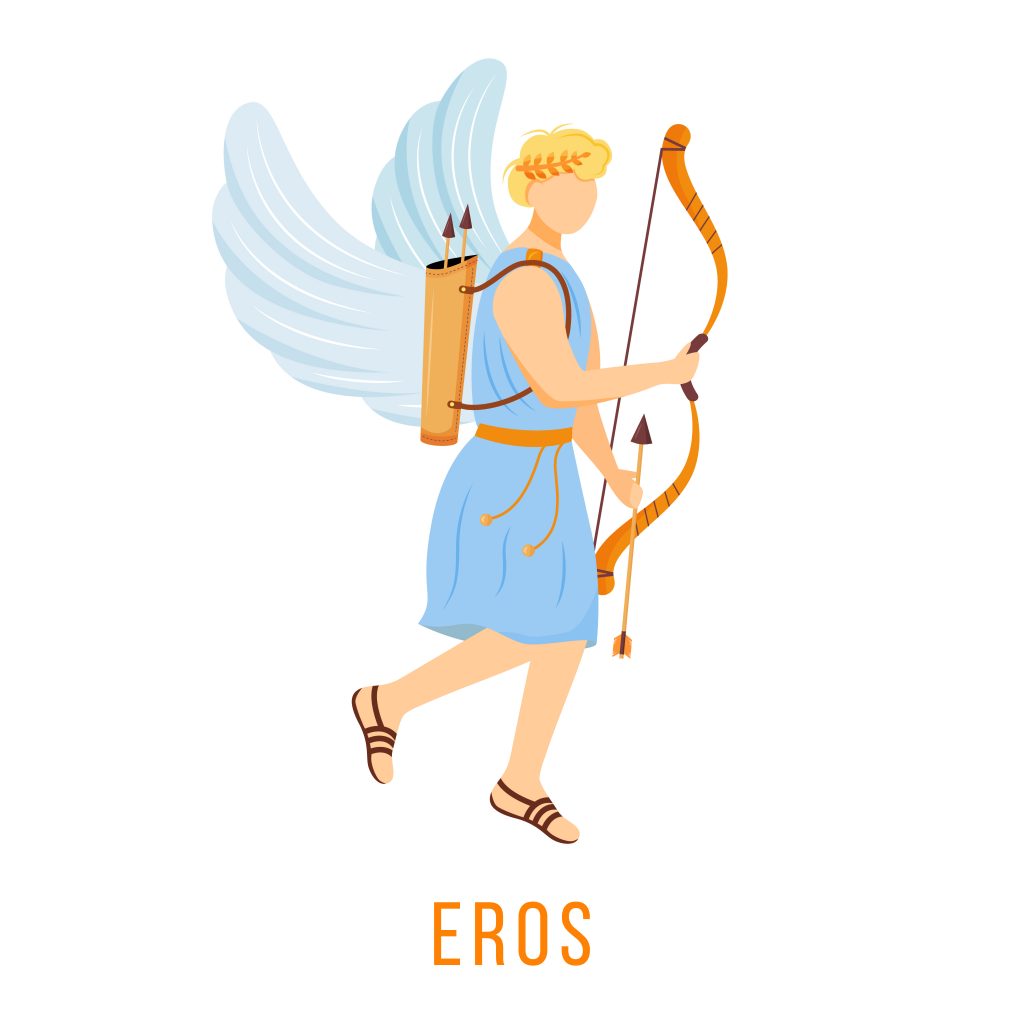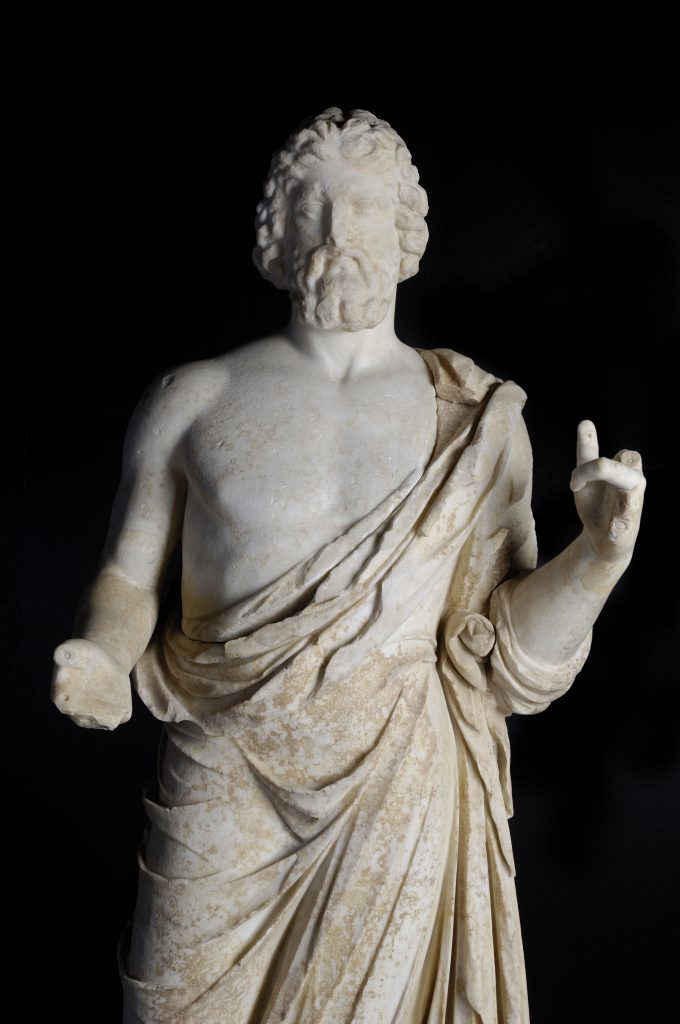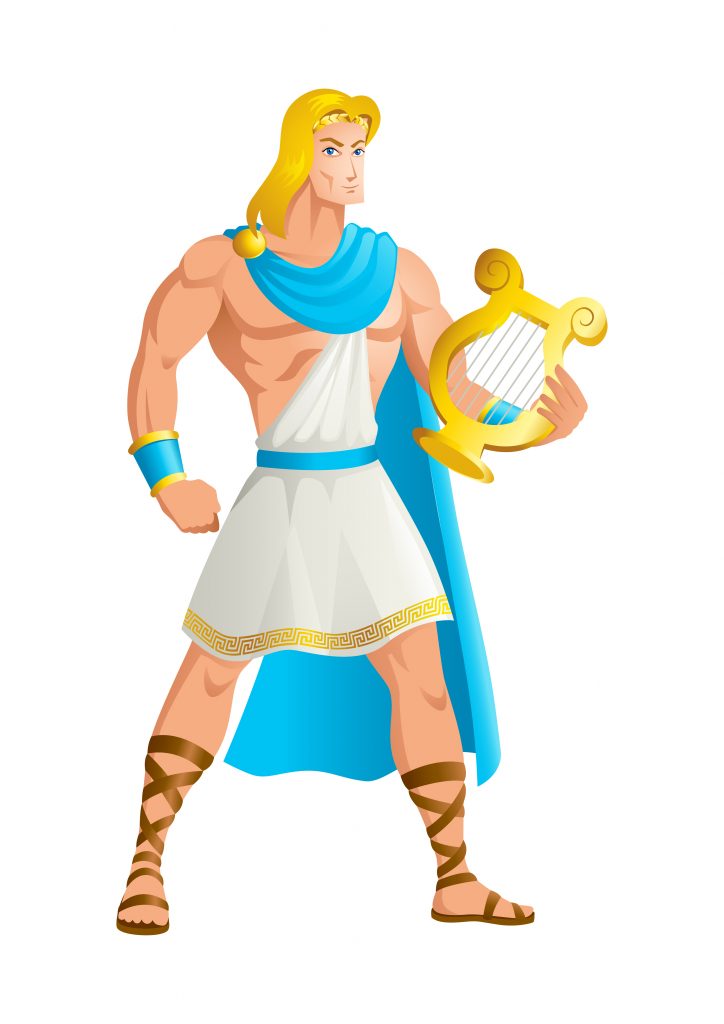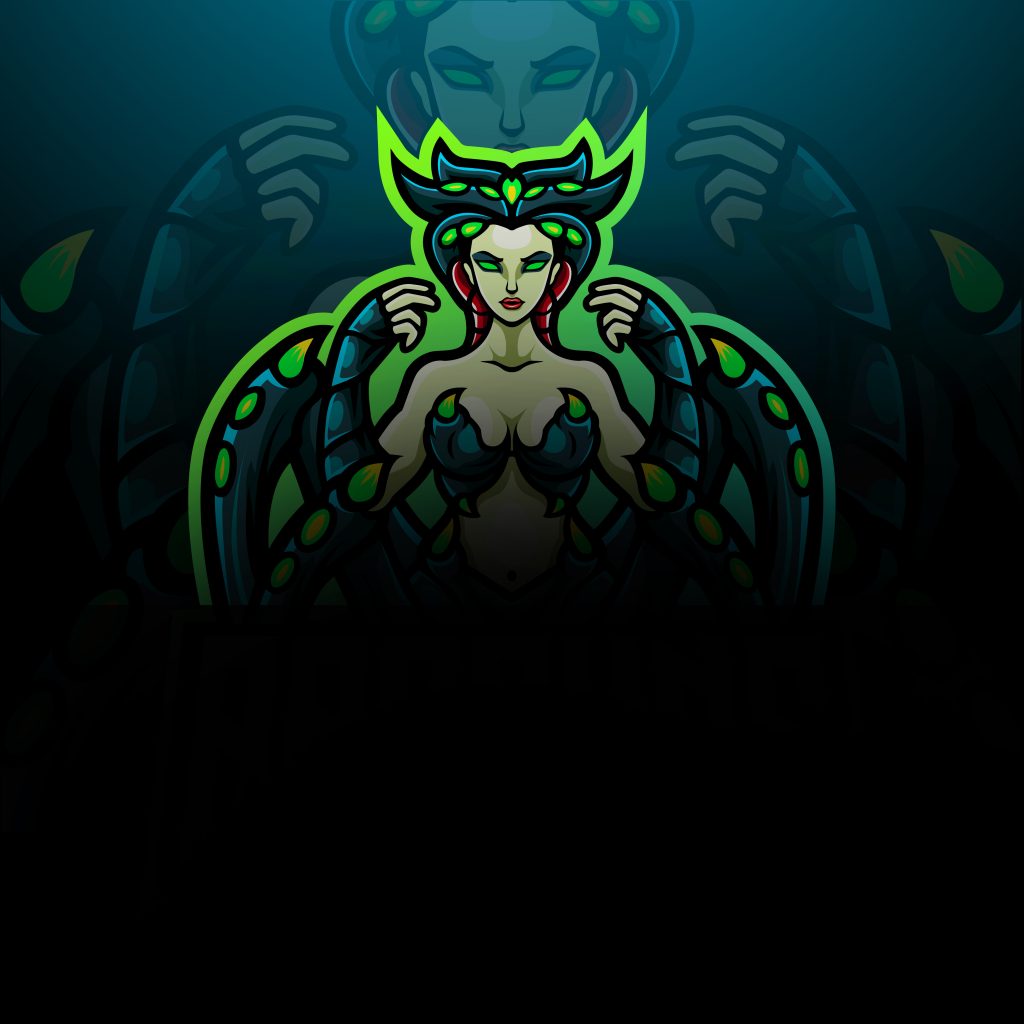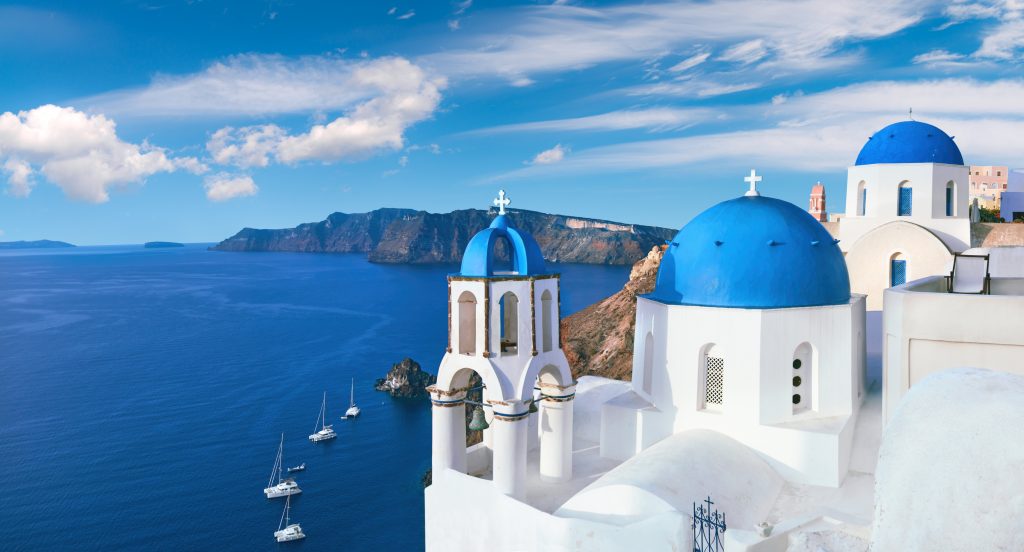Greece is a country with a very rich history and the homeland of many famous personalities throughout the centuries. This section proposes information about the history of Greece: from Stone and Bronze age to the Twentieth century, but also information about other historical facts: famous quotes, famous personalities of ancient Greece, Olympic games, flags, archaeological sites, historical monuments, and Unesco Sites in Greece. We also propose information about the history of Greece for many locations and Greek islands.
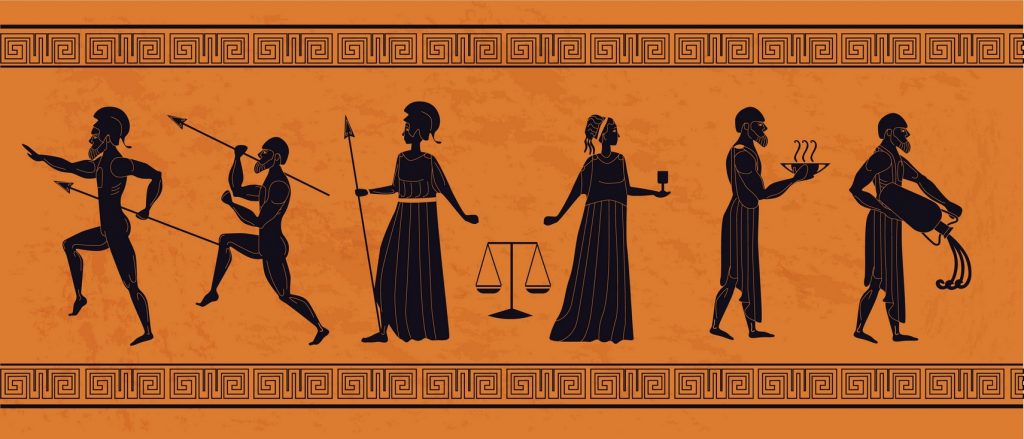
Greece Stone and Bronze Age
The Stone Age
According to archaeologists, the earliest settlements in Greece date from the Palaeolithic era, between 11,000-3,000 BC, when a population coming from the east (and, as some believe, from Central Europe) started to develop stone tools and basic agricultural activities. In fact, the earliest organized town in Europe is the ancient town of Poliochni, Lemnos island, which dates from the 3rd millennium BC.
Excavations have proved that the civilization in Greece became more advanced between 3,500 and 3,000 B.C, with larger villages and a social organization with the formation of an elite group. Extensive agricultural communities appeared that were fishing, producing clay pottery and making sea expeditions. The good weather conditions and advanced social formations attracted to the Greek territory immigrants and traders from all the Mediterranean Sea.
At the same period, a trace of religion appeared, with gods inspired from nature: clay figurines of female and animals were placed in sanctuaries and graves.
The Bronze age
The art of metalworking arrived from the east around 3,000 BC. The use of bronze in tool making and weaponry was a rebirth for the civilization in Greece. The 2nd millennium BC gave birth to some great civilizations: the Minoan on Crete island, the Mycenaean on the mainland and the Cycladic (in Cyclades islands) in the islands of Centre Aegean.
This period is characterized by the rapid growth of population and the development of trading. The islands of the Cyclades, located in the center of the Aegea Sea, were an important trade center between Europe and Asia. The Cycladic civilization developed rapidly in all domains: trade, politics, and culture with impressive frescoes and marble figurines. Samples of the Cycladic architecture can be seen in the Museum of Cycladic Art in Athens and the regional museums on the Cyclades islands.
The Minoan Civilization
The Minoan civilization, named after the mythical King Minos, developed in Crete around 2,600 BC and onwards. The Minoans had a flourishing economic, political, social and cultural organization. The Minoan period was characterized by important trade activities and the construction of impressive palaces such as Knossos, Malia, Zakros, and Phaestos. During this period, the first writing in the Greek World, called Linear A, appeared for the first time in Crete. The Minoans also developed a strong naval power and installed many colonies in the Aegean Sea.
According to the remains found on the island of Crete and the lack of defensive walls, the Minoan civilization must have had peaceful relations with the other civilizations of the Aegean. This civilization disappeared suddenly around 1,500 BC, possibly due to the huge volcanic eruption of Santorini island. It is believed that the eruption has caused an enormous earthquake and huge tsunamis that crossed the southern Aegean and covered the Minoan towns in volcanic ashes. It is after that period, around 1,200 BC, that the rival Mycenaean civilization took control of the trade network of Crete.
The Mycenaean Civilization
The Mycenaean civilization took its name from the town of Mycenae, the most powerful kingdom that actually dominated all through this era. The Mycenaean society was formed by an elite group organized around the authority of a single figure, the king, with varying degrees of power. Their citadels were fortified with the “Cyclopean walls“, called this way because the Greeks believed that only Cyclopes could have lift so large stones. The Mycenaean society with its great military strength conquered Crete and took control of the Minoan trade network.
The Mycenaeans also used a written language called Linear B, a development of the former Minoan Linear A, used only to register the goods and produce into the palaces. It was also the Mycenaeans that started the war against Troy as well as other expeditions around the Aegean. Between 1,250 and 1,150 BC, a combination of internal warfare and invasions from northern tribes destroyed most of the Mycenaean towns and the Mycenaean civilization disappeared.
Mycenae Cyclopean Walls
The Cyclopean Walls of Mycenae: The characteristic of the Mycenaean walls is that they are made of huge limestone boulders, which have been fitted together rather roughly. As these boulders are very big in size, the ancient people believed that it was the Cyclops who built these gates, as the thought it impossible for men to move such big rocks. That is why these walls were named Cyclopean Walls.
Related Tour: One day tour to Mycenae, Epidaurus and Nafplio, from Athens, from 78.30 € (From Athens)
Notable is that the hammer was rarely used for the construction of these walls and thus they fit very roughly together. The cracks or gaps between the boulders were filled with smaller limestone. Dating since the 13th century AD, these Cyclopean walls are the characteristic feature of the Mycenaean architecture.
Archaeologists have noticed that this type of architecture can be seen in other Mycenaean towns, too, such as Tyrins or Argos. However, Harry Thurston Peck, in 1898, divided Cyclopean architecture into four styles.
The first style consists of stones of various size filled in between with smaller stones. The second style consists of polygonal stones that fit precisely. The third style is characterized by a stone of unequal size but of the same height and the fourth is known for its rectangular stones of unequal height. The walls in Mycenae match to the third style.
The Dorian Invasion
The civilizations that flourished during the Bronze Age ended in an abrupt way during the 12th century BC when the tribe of the Dorians came from northern Europe. They scattered the Mycenaean population and decentralized their established control system. Agriculture, industry, and trade activities were divided into the villages. Gradually the economy, politics, and culture declined and all the trade networks with the Near East collapsed. The art of writing also disappeared.
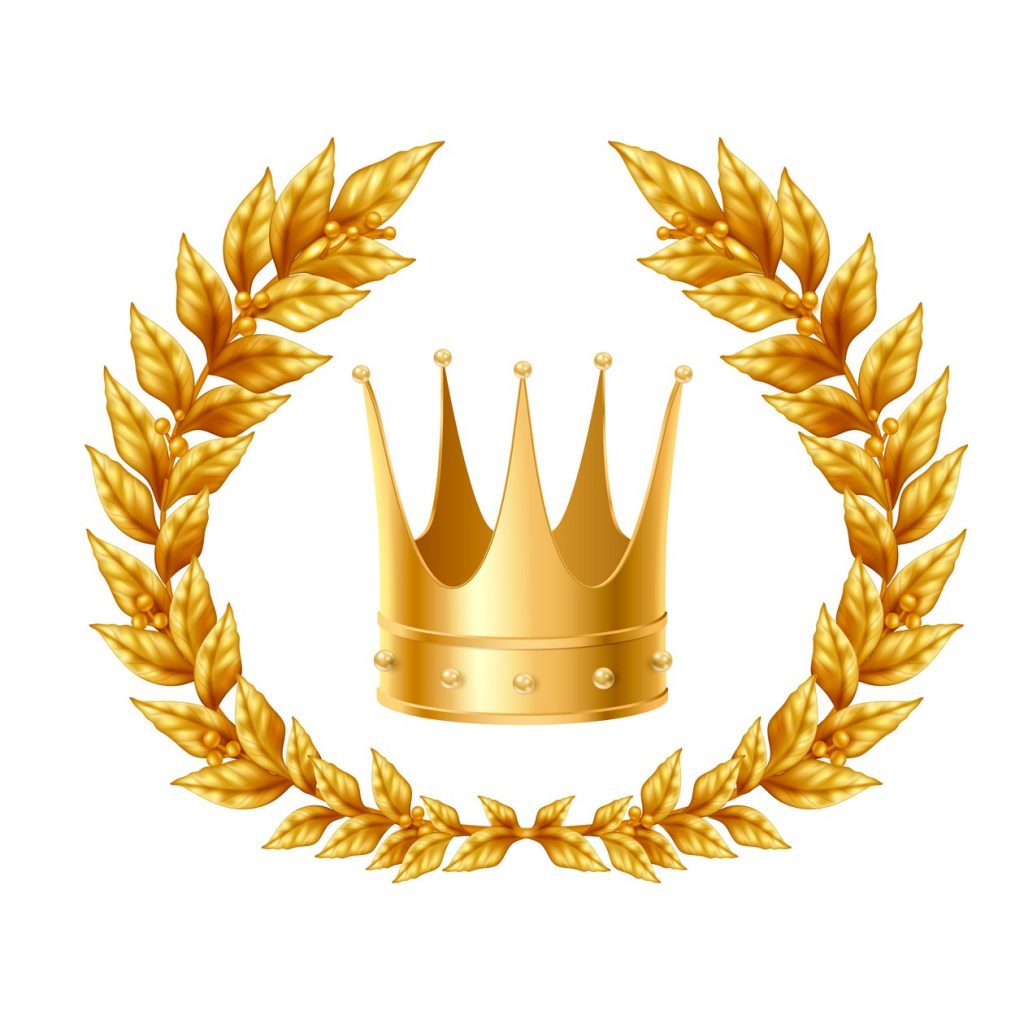
CLASSICAL PERIOD
The formation of the city-state
In the 8th century BC, Dorian’s rule declined and the towns started to re-emerge. Two towns, Argos and Corinth began trades with the Near East and a wealthy elite group emerged from trading. These two ports were specialized in the manufacture of luxury goods and products like olive oil, wine, and wheat that were stored and transported in pot vases. This is why pottery was also developed at that time. In trade contacts with the Phoenicians, they adopted their phonetic alphabet and other innovations.
Many Greek colonies based on trade and agriculture were founded all around the Mediterranean Basin and the Black Sea. This way, the Greek culture started slowly to grow and gradually more than 150 colonies were established. These colonies had strong connections with the mother town and provided economic and military support to each other.
Another interesting fact is that poetry started to develop that time. The first poets were sung by professional singers with the accompaniment of music. In the 8th century, two poems that were sung as part of the tradition since the 12th century BC were sung by Homer and written down by his students. These poems were the Iliad and the Odyssey.
From a political aspect, this period is characterized by the growth of the city-state called polis. The two most important city-states that began to develop were Sparta and Athens. Sparta was the first city that organized itself with a strict social structure and a government that included an assembly representing all citizens.
In the meanwhile, the largest polis appeared which also included several other regions of Attica and was named Athens, a name taken by goddess Athena according to the myth. The first social system of Athens was based on wealth rather than aristocratic birth. Although in different ways, Sparta and Athens both included all citizens in their political system.
During this period, inter-state relations started to grow between the towns of ancient Greece. In religious or athletic festivals, such as the Olympic Games, the Greek people showed an early sense of common identity and referred to themselves as Hellenes. All the foreigners were called barbarians.
In the 6th century BC, the Greek towns faced the threat of the Persian Empire, under the rule of King Xerxes who had views on invading Greece and consequently entire Europe. The Hellenic league, under the leadership of Athens and Sparta, decisively defeated the Persians at the battles of Marathon, Salamis, and Plateae. They only defeated in the Battle of Thermopylae, where King Leonidas of Sparta and his 300 soldiers stayed to delay the Persians while the other Greek towns were preparing their counter-attacks. Leonidas and his soldiers died in this battle but gave the precious advantage of the time to the other Greeks to get ready and eventually win the Persian army.
After the Persian Wars, two large leagues were formed in the Greece territory: the Peloponnesian League, headed by Sparta and the Delian League, headed by Athens.
Olympic Games
The origin of the Olympic Games is linked with many myths referred to in ancient sources, but in the historic years their founder is said to be Oxylos whose descendant Ifitos later rejuvenated the games. According to tradition, the Olympic Games began in 776 B.C. when Ifitos made a treaty with Lycourgos the king and famous legislator of Sparta and Cleisthenes the king of Pissa. The text of the treaty was written on a disc and kept in the Heraion. In this treaty that was the decisive event for the developement of the sanctuary as a Panhellenic centre, the “sacred truce” was agreed. That is to say the ceasing of fighting in all of the Greek world for as long as the Olympic Games were on. As a reward for the victors, the cotinus, which was a wreath made from a branch of wild olive tree that was growing next to the opisthodomus of the temple of Zeus in the sacred Altis, was established after an order of the Delphic oracle.
The Olympics were held, after the completion of four years during the month of July or August. The time inbetween two Olympic Games was called an Olympiad. In the beginning the games lasted only one day and comprised of only one event, the running of one Stadion, but gradually more events were added resulting, towards the 5th century B.C., in the games lasting for 5 days.
In total the Olympic Games consisted of 10 events: running, the pentathlon, jumping, discus, “ekebolon” javelin, wrestling, boxing, the pancration, chariot racing, and horse racing.
All Greeks who were free citizens and had not committed murder or heresy, had the right to take part in the Olympic Games. Women were not entitled to take part, except as owners in the horse races, while being strictly prohibited from watching the games.
Leonidas, the king of Sparta
Leonidas (540-480 BC), the legendary king of Sparta, and the Battle of Thermopylae is one of the most brilliant events of the ancient Greek history, a great act of courage and self-sacrifice. This man and the battle itself has inspired since then many artists, poets and film-makers that hymn the spirit of him and his Spartans.
Little is known about the life of Leonidas before the Battle of Thermopylae. Historians believe that he was born around 540 BC and the he was son of King Anaxandrias II of Sparta, a descendant of Hercules, according to the myth. Leonidas was married to Gorgo and had a son. He must have succeeded his half-brother to the throne at around 488 BC, till his death in 480 BC. His name meant either the son of a lion or like a lion.
In summer of 480 BC, Xerxes, the king of Persia, was attacking Greece with a big and well-equiped army. As he had already conquered northern Greece and he was coming to the south, the Greeks decided to unite and confront him in Thermopylae, a narrow passage in central Greece. Leonidas and his army, 300 soldiers, went off to Thermopylae to join the other Greek armies. The Greeks altogether were about 4,000 soldiers, while the Persian army consisted of 80,000 soldiers.
Xerxes waited for 4 days before he attacked, believing that the Greeks would surrender. When Xerxes sent his heralds to the Greeks, asking for their weapons, as a sign of submission, Leonidas said the historical phrase Come and get them!, declaring the beginning of the battle.
The first days, the Greeks were resisting, until a local man, Ephialtes, revealed to the Persians a secret passage to circle the Greeks and win the battle. Seeing that the Persian army were about to circle them, Leonidas asked the other Greeks to leave the battlefield. He proposed that he and his army would stay back to cover their escape, while the other Greeks would leave to protect the rest of Greece from a future Persian invasion.
Therefore, Leonidas with his 300 Spartans and 700 Thespians, who refused to leave, stayed back to fight the huge Persian army. They were all killed in the battlefield, in this deathtrap, protecting theie homeland and their values. After all, it was disgraceful for a Spartan to return to Sparta beaten in war. A Spartan would either return from war as a winner, or he should not return at all.
Today, a modern monument lies on the site of the battle in Thermopylae to remind of this courageous action, while the tomb of this legendary king lies in his homeland, Sparta.
The Classical Period
From the 6th to the 4th century, Athens was the dominating power in the Aegean Sea and had developed strong connections with ports around the Mediterranean Sea. The Athenian Empire was composed of 172 tribute-paying towns and had got very rich out of the trade with other city-states of ancient Greece and other countries of the Mediterranean basin. This enormous wealth permitted Athens to flourish in terms of art, architecture, literature, philosophy, and politics.
Until the beginning of the 6th century, Athens was ruled by aristocrats and generals. The position of the citizen in the hierarchy depended upon his wealth. Poor citizens had no rights until Solon, lawgiver, and poet, put the basis for democracy when he declared all free (non-slaves) Athenians equal by law and abolished inherited privileges.
Pericles, a general who was elected governor in 461 BC, established a developed kind of democracy upon which all decisions were taken by the general assembly of the Athenian citizens. These meetings would take place in the Agora (modern Thissio), where political matters were discussed and governors were elected. All Athenians had the right to vote, speak and become a candidate for governor. Also, all Athenians by turn were holding official positions, sharing thus wisdom and responsibility in this co-operative democracy.
Pericles also showed a special interest in education and legislated that even the poorest children must be educated in public schools. He also constructed many public works, monuments, and temples, including the Acropolis that symbolized the majesty of Athens. This period is known as the Golden Age of Athens.
With the enormous growth of Athens, many city-states felt threatened. One of the states was Sparta. This town had developed a close military culture. The Spartans were not allowed to exit the town, they received a military education all through their lives and had many slaves to cultivate their land while they were fighting for the defence and expansion of their hometown.
The rivalry between Athens and Sparta led to the Peloponnesian War (431-404 BC), a war that gradually included almost all towns of Greece as allies of either Athens or Sparta. After many years of war and mostly after the death of Pericles, the Athenians were eventually defeated. However, the end of this war found most Greek towns down to their knees after the long battles.
Pericles
Pericles was the most famous and influential Athenian statesman of ancient Greece. His name means surrounded by glory in ancient Greek. Pericles was born in the small town of Holargos, north of Athens, in 495 BC. His father was Xanthippus, famous for his commandership, which led to the Greek victory over the Persians, at Mycale, in 479 BC.
His mother was Agariste, who came from the wealthy family of Alcmaeonidae. It is narrated that, while she was pregnant, Agariste dreamt that she would give birth to a lion, a sign that the child would be strong and brave.
Pericles was shy in his early years. He devoted most of his time to education and was greatly inspired by his two mentors, the sophist philosopher Damon and the Ionian philosopher Anaxagoras. Some of his notable friends included historian Herodotus, sculptor Phedias and sophist Protagoras. He always appears in statues with beard and a helmet. It is said that Pericles would always wear his helmet in public to hide his unusually oblong head.
Political career
His political career took off in the spring of 472 BC when in the religious festival of Dionysus, he presented the play of Aeschelus, Persae, to the audience, a sign that he was one of the wealthiest men in Athens that time. Gradually, Pericles managed to weaken his political opponents, Cimon and Ephialtes, and in 461 BC, he became the ultimate statesman in Athens. He remained in power for almost forty years, till his death in 429 BC, and scientists name this years the golden age of Pericles, as under his guide, Athens became the most powerful city-state in Greece.
Interest in education
Pericles showed special interest to the education of the lower social classes. He thought that all Athenians should be educated in philosophy, art, music and poetry. He also built many gymnasiums for the young people to exercise their body. As part of education, Pericles believed that theatre was an important part, which is why he passed a law that the state was burdened with the theatre tickets of the lower classes, so that all Athenians could attend theatrical plays.
Pericles also constructed many public works, monuments and temples in Athens. The great walls that protected Athens and Piraeus were his work. The Acropolis was built after his encouragement and with the money of the Delian League, as Athens became the leader of this league in his time. War and commercial ships were built that developed trade all over the Mediterranean and made Athens the greatest naval power in Greece.
Aspasia and her trial
Due to his popularity, Pericles was much hated by his political opponents, who in 432 BC accused him, his companion Aspasia and their friends of immorality. Particularly, they accused Aspasia of corrupting the women of Athens. Pericles, in 465 BC, had divorced his legal wife, who bore him two sons, to live with Aspasia, a courtesan from Miletus.
Courtesans, or else heterae, were very popular in ancient Athens and in fact, they were educated women who frequently hosted philosophers and politicians in their houses. These women were highly respected for their mind and, as they were usually foreigners, they were the only women allowed to walk unescorted in the streets.
The opponents of Pericles also accused Aspasia of involving Athens in two wars. The first was in 440 BC, when Pericles persuaded the Athenians to interfere between the conflict of Samos and Miletus, the homeland of Aspasia, and the second war was the Peloponnesian War that had just started. Pericles, in a great emotional scene, presented in the court with tears in his eyes and persuaded the judges to release Aspasia from the accusations.
The death
Pericles, the inspired statesman of Athens, the wonderful orator and the brave general, died in 429 BC, during the First Peloponnesian War, of plague. That time, the Spartans were besieging Athens, whose residents had been gathered inside the walls. However, a great plague burst that killed almost half the population of the city, including Pericles and his two sons from the first wife.
Before he died, Pericles managed to grant the Athenian citizenship to his son with Aspasia, breaking a law he himself had established in 451 BC, according to which the Athenian citizenship is granted only to people whose both parents are Athenians.
His death was a great strike for the city, as all his successors were proven inferior to him. Without his inspired guidance, Athens eventually lost the Peloponnesian War and, after that, it never managed to recover its glory. It can be said that Pericles was the man who gave Athens its power and the man who deprived it with his death.
The expedition of Alexander the Great
After the Peloponnesian War, a new political force emerged, Macedon. The Macedonians were a tribe of northern Greece with different customs and social organization. It was organized with a headman, the king, concentrating all the state powers.
Macedon quickly became a large kingdom and under King Philip II they even conquered Athens and Thebes in 338 BC. He united all the Greek towns and wanted to start an expedition against the Persians but death caught upon him. After his assassination, his son Alexander became king at the age of 22 and continued the vision of his father.
Alexander the Great invaded Asia in 334 BC with 30,000 soldiers from all Greece, except for the Spartans who denied following the expedition due to religious beliefs. Before dying at the age of 33 of malarial fever, Alexander the Great had conquered the entire Persian Empire, Egypt, Mesopotamia, modern Afghanistan and some parts of India.
After the death of Alexander the Great, the large Macedonian Empire that expanded from Greece to India were torn into pieces. New monarchies made their appearance in this period that is called the Hellenistic period but they did not last for long. The concept of polis had disappeared and states of larger size appeared. However, in these states that were spread in all eastern world, the Greek language remained the official language in trade, administration, and literature. The history of Ancient Greece is now entering a new stage: the Hellenistic and Roman period.
Alexander the Great
Alexander was the third King of Macedon and can be regarded as one of the best military personnel the world has ever seen. His military genius brought him tremendous success and managed to stretch the Empire of Macedon from Greece to India. Alexander the Great, as he is known today, is credited with conquering and annexing to his glorious empire nearly half of the world’s population during his time. He is undoubtely the most famous figure of ancient Greece.
Tremendously successful in all military coups, Alexander the Great spread the Greek civilization all over the East, till the borders of India, and changed the course of history until he died at the age of 33. In his short life, he managed so many things as to become a legend.
The First Years
Alexander was born in 356 BC in Pella, the capital of the Macedon Kingdom. His father was King Phillip II of Macedon and his mother was Olympias, the daughter of the king of Epirus. The two of them had met in Samothraki island during some religious festivals and, although Phillip also had other wives, Olympias was thought as his primary wife and queen. The myth says that the night Alexander was born, the temple of Artemis in Ephesus, one of the Seven Wonders of the World, was burnt down as the goddess was not there to protect it, being busy to attend the birth of that boy who would later become a legend.
Since he was a little boy, Alexander was taught by the best tutors and had shown special courage in fights. At the age of 10, to everyone’s surprise, he managed to tame a very wild horse. Since then, this horse which was named Bucephalus became his companion in all battles and wars.
When Alexander was 13, he came under the tutelage of Aristotle, the famous philosopher. Aristotle taught some very important and interesting subjects to him and his courses covered topics on biology, philosophy, religion, logic and art. During this learning process, Alexander developed favoritism for Homer’s literature, especially the epic of Iliad, and became a great fun of Achilles, whom he had as his exemplar.
Ancient sources state Alexander to be short, much shorter than a normal Macedonian, but very tough. His beard was scanty and it is reported that he had a short of spinal problem: his neck was twisted and some believe that he had a congenital spinal disorder.
At 16, when he finished his education, he was constantly involved in fights against the tribe of the Illyrians, who threatened the Macedonian Empire. Along with his father, he participated in the Battle of Chaeronea in 338 BC and defeated both Athenians and Thebans who had formed an alliance against Macedonia. Together they occupied Central Greece and then marched to Peloponnese. There at Corinth, that Philip got the recognition of Supreme Commander of all Greeks in the war they wanted to launch against Persia.
When King Phillip II returned to his kingdom, he was charmed by a Macedonian noblewoman Cleopatra Eurydice, whom he married soon. Their marriage bore doubts in the minds of many as because their offspring would be true Macedonian blood and a possible heir to the throne. Such thoughts were even spoken aloud in the banquet ceremony before the wedding, which led to a heated exchange of words and actions between Alexander and his father.
Next day, the day of his wedding to Cleopatra, King Phillip was assassinated by Pausanias, his chief bodyguard, for unknown reasons. Some said that it was Olympias who had ordered the assassination of her husband from jealousy. Others believed that the Persians had arranged everything to prevent a war against them, while Alexander himself was also suspect as he faced the danger not to become king, after the birth of Cleopatra’s son.
The result was that at the early age of 20, Alexander the great had to take his father’s position on the throne. Soon regions of Thebes, Athens, Thessaly and the Thracian tribes revolted against Macedon to acquire their independence now that Phillip was dead. Alexander got the news very quickly and he acted spontaneously. He first crushed the Thessalian forces making them surrender and went south to face other battles.
In Corinth, he met the Athenians who opted for peace and persuaded all the Greeks to make his father’s dream true: to start the war against the Persians in order first to take revenge for the Persian Wars, about a century earlier, and then to minimize the risk of a new Persian attack.
Conquering the East
It was in the springtime of 334 BC that Alexander the Great set out to conquer Persia with an army of soldiers from all Greek towns, except Sparta that denied taking part in this war. The generals of his army were all Macedonians. They were Antigonus, Ptolemy and Seleucus. In the ancient city of Troy, close to the River Granicus, the Macedonian army defeated the Persian forces and occupied all the coastline of Asia Minor. While in Troy, the myth says that Alexander paid tributes to the grave of Achilles, his eternal model.
At the Battle of Issus, in 333 BC, the Macedonian army for the first time came face to face with the real Persian army led by King Darius III. Darius was defeated and he succumbed to Alexander, who proclaimed himself to be the King of Asia. Alexander moved then to Egypt, where he was viewed upon as a liberator to free Egypt from the Persians. There he was named Pharaoh and established the city of Alexandria, that exists and flourishes till today. Alexander went on to the west to occupy Babylon, the capital of the Persian Empire.
In Babylon, he resided in the Palace of Darius and married his daughter, princess Statira. The ambitions of Alexander brought his army to modern Afghanistan and Pakistan, where he married the daughter of a local leader, Roxana. This was rather a strange decision and raised many reactions from his general, but Alexander considered it a symbolic action: a Greek king married a local princess and populations of the West and the East could finally unite into one empire, as was his dream.
In the meantime, the relationship of Alexander with his generals was getting bad. After some conspiracies against his life, Alexander didn’t trust them any more except for one general, Hephaestion, the son of a Macedon nobleman and long friend of his. The Macedon generals would also protest against some Persian traditions and practices that Alexander demanded from them, such as the custom of kneeling before him. This was a natural practice for the Persians to show their respect to the king but the Greeks kneeled only before the statues of the gods, not to their kings, so the generals considered it as an act of indignity to kneel in front of a man.
After long years of marching and fighting, Alexander the Great had yet reached the borders of India but fighting with the local tribes was very difficult. In fact, in a battle, Alexander lost his beloved horse, Bucephalus. Plus his army was much tired from so many years of wars and they wanted to rest. That is when Alexander decided to return to Babylon for a few months and then come back to conquer India.
The Death
However, death prevented him to launch a new expedition. Alexander the Great died in June 323 BC in his palace in Babylon from unknown causes. It could be poisoning, or malaria or even a physical problem that may have caused the death of Alexander. Others say that he died from grief because his companion, Hephaestion, had been killed in a battle some months before.
When he died, his wife Roxana was pregnant to their son but Alexander didn’t see his heir being born. After his death, the vast Empire he has created, the Empire that was stretching from Greece and Egypt to India, was split into four parts and was divided to his generals, while his son was killed before adulthood.
Despite his just 33 years of life, Alexander had seen them all in life: love and hate, loyalty and conspiracy, war and peace, virtues and faults. He was happy to fulfil his ambitions and he changed history and the fate of many tribes, as the Greek civilization was spread far and wide. The cities he had conquered and established flourished for many centuries and even today there are tribes in Asia that say they descend from Alexander the Great.
Greece Roman Period
The Macedonian Empire, due to the constant warfare among the several autonomous kingdoms, was made vulnerable. At the same time, Ancient Greece was threatened from the East by Persians, Parthians, and Bactrians and from the West by the Romans, who had started expanding their power in southern Italy.
The most important adversary of Rome in the Mediterranean Sea was the Empire of Carthage (modern Tunisia). Wars lasting for 45 years started between these two empires. Ancient Greece was involved in this campaign against Rome. Hannibal, the Carthaginian leader, allied with Philip V of Macedonia, the most important power of the Balkans. The Romans defeated the Macedonians in the first and second Macedonian Wars that ended in 197 BC. The victorious commander Flamininus established a protectorate over the independent city-states of Greece. The Achaean confederacy started a rebellion in 146 BC that resulted in the destruction of Corinth. Severe and oppressive restrictions were set. Rome had no consistent policy about the Greek states. They demanded only security and revenue.
Greece under the Roman Empire, from 31 BC to 180 AD is described as the era of the Pax Romana, a Roman Peace between Rome and the central areas of the Empire, like Greece and the Greek East. This period is described as a period of peace and security which permitted economical and cultural progress, especially in the cities such as Athens, Corinth, Alexandria, Miletus, Thessaloniki, and Smyrna. Due to a decentralized Roman provincial administration, the urban Greek elite re-appeared, which also had the right to participate in the Roman Senate. The Romans welcomed the Greek culture and Latin and Greek became the official languages of the Empire. A Greco-Roman Empire was created.
Greece Byzantine History
During the 3rd century AD, Greece was invaded by various tribes from the Balkans and Eastern Europe that were fighting the Roman army. The Pax Romana was endangered. Deep social and economic problems rose all over the Empire and taxes were increased to expand or reorganize the army.
In the meantime, Christianity had been recognized as a religion in the Empire. In 305 AD, Constantine became the Emperor of Rome. In 324 AD, Emperor Constantine I transferred the capital of the Empire from Rome to Byzantium which took the name of Constantinople, meaning the town of Constantine.
In 364 AD, the Empire was officially split and the Roman Empire was divided into two parts: the Roman Empire at the west and the Byzantine Empire at the east. The Roman Empire started to decline after the invasion of barbarian troops from the North.
The strategic location of Constantinople, between the Black Sea and the Aegean, allowed controlling trade and developing the economy. Even if Constantine gave legitimacy to Christianity, paganism continued to exist until it gradually disappeared. During the 6th century, Emperor Justinian expanded the empire’s territory by conquering the southern Levant, northern Africa, and Italy. He organized a centralized bureaucracy and a new fiscal system.
However, the Empire was engaged in several wars that left it very vulnerable. Serious threats would frequently come both from the East and West. During the 9th century, the Byzantine Empire was ruled by a Macedonian dynasty which conquered new territories in the Middle East and opened new trade lines. These military successes improved the economic status of the Empire.
These periods of prosperity were followed by a decline after the 11th century. In 1208 AD, the Knights of Saint John seized Constantinople and caused damages to a large part of the town. After that, the Venetians conquered the largest part of the Greek mainland and the islands. These territories were lost by the Venetians to the Ottomans in the 14th century. Constantinople finally fell to the Ottomans in 1453 BC, marking the end of the Byzantine period.
Greece Ottoman history
The Ottomans Occupation
After it fell to the Ottomans, Constantinople was renamed Istanbul. The Ottoman state was a theocracy and its political system was based on a hierarchy with the Sultan at the top, having absolute divine rights.
The Ottomans divided the non-Muslim community into millets: Armenian, Catholic, Jewish, and Orthodox, giving to each millet a large part of autonomy. The ruler of the millet was the religious leader who was responsible for the obedience of the subjects to the Sultan. The head of the Orthodox millet was the Ecumenical Patriarch of Constantinople. The patriarch had much power and played an important role in the development of the Greek Orthodox society the times of the Ottoman occupation.
The Ottoman state had a decentralized administration. They designed local military leaders and later the Empire was divided into regions that were governed by Pashas. Official contact was limited to tax collection and military conscription. The Orthodox priests and Christian primates collected taxes and maintained order but on the other hand, they kept the Greek language and traditions alive and allowed keeping the national identity.
The Ottoman system discriminated the non-Muslim population by imposing special taxes like the head tax and tax for freedom. Those centuries, many Greek families moved to other countries, mostly Romania, Russia, Italy, and Austria, where they were dealing with trade.
These Greek communities abroad played an important role in the development of the Greek identity and helped economically their occupied homeland. They were influenced by all the modern currents, including the ideology of revolution. Many diaspora Greeks became rich and helped by founding schools and other public institutions back home. Movements for independence started to multiply at the beginning of the 19th century. This was when the “Filiki Eteria” was founded, a secret movement that aimed to start the revolutionary war of Greece.
The War of Independence
On March 25th, 1821, after four centuries of Ottoman occupation, the Greek Revolution broke out. Sporadic revolts against the Turkish broke out in the Peloponnese and the Aegean islands by some determined guerrilla fighters. A year later, the rebels had set the Peloponnese free and the independence of Greece was declared in January 1822 by the National Assembly of the Greeks.
The Greek cause created a feeling of philhellenism from foreigners all over Europe. Many of them came to Greece to fight and die for the country. The determination of the Greeks and the Philhellenes finally won the support of the Great Powers: Russia, United Kingdom, and France. The Great power asked the Turkish Sultan to drawback. The Turks refused and the Great Powers sent their naval fleets to Navarino, destroying the Egyptian fleets that were helping the Turkish forces.
A Greco-Turkish arrangement was finally signed in London in 1829 which declared Greece an independent state with Ioannis Kapodistrias as his first governor. Once the War of Independence came to an end, Greece fell into a period of disillusion. The first state included Peloponnese, Sterea, the Cyclades islands and the Saronic islands. The country was very poor, the landowners were asking for their ancient privileges while the peasants wanted a redistribution of the land.
After the assassination of Kapodistrias in Nafplion, the Bavarian Prince Otto was named the King of Greece. He governed for many years till 1862, when he was exiled for ignoring the Greek Constitution. The next king was Danish, King George I. As a gift to Greece, the United Kingdom to the new king the Ionian islands, that were under British occupation till then. King George, I ruled the country for 50 years and brought stability and a new Constitution which specified the monarchic powers.
Greece 20th Century history
The early 20th century
The early 20th century finds Greece weak after many bankruptcies and the lost Greco-Turkish war of 1897. In 1881, Thessaly had already been attached to the Greek state. Many volunteers from all over the country go to Macedonia to fight against the Turks and the Bulgarians that occupy the region. This period from 1904 to 1908 is called the Macedonian Struggle.
In 1912, after the first Balkan Wars, Macedonia and Epirus are attached to the Greek State and in 1913, it was the turn of Crete to be united to the rest of Greece. These were the results of the political efforts of Eleftherios Venizelos, an inspired Cretan leader that became prime minister of Greece. Venizelos worked hard for the reunification of all Greece, he established constitutional amendments and social laws and re-equipped the army. He managed to stabilize the country to a great extent.
When World War I erupted, King Constantine believed in maintaining a neutral position but Prime Minister Venizelos was passionately pro-Entente. The Entente reinforced his position by promising to award Asia Minor to Greece. Venizelos wanted to make “Magna Grecia”, that is to unite the country as per its ancient territories. He set up an allied revolutionary government in Thessaloniki and the Greek army invaded the city of Smyrna, a town with a large Greek population, in 1919. The Greek army was marching, regaining the territory of Asia Minor where Greek populations were residing since the 8th century BC. However, when Venizelos lost the elections in Greece, the Greek army started to lose the fights and was finally severely defeated.
The treaty that followed provoked a population exchange. 400,000 Turkish Muslims were traded against one million Orthodox Greeks. The Asia Minor destruction of 1922 was a large wound for the country: immigrants who had lost their homes were coming in the mainland, that could do very little to comfort them. A new wave of economic difficulties followed and the next decade was filled with internal political turmoils.
The German Occupation
Greece endured a succession of monarchies, a military rule, and brief democracies. In 1936, General Metaxas was appointed Prime Minister by King George II and inaugurated an oppressive fascist dictatorship. In October 28th, 1940, Metaxas was opposed to German and Italian domination and refused Mussolini’s demand to occupy the country during World War II. This day is celebrated as the Ohi Day in Greece.
Greece fell to the Nazi troops in April 1941, which resulted to the mass destruction of ancient sites, large scale executions and the extermination of the largest part of the Jewish community who were residing in many Greek towns, such as Athens, Thessaloniki, and Rhodes. Resistance movements sprang up but they were divided between a royalist and communist movement.
In October 1944, Greece was set free by the Germans but a couple of months later a civil war started between the royalist and communists. The royalist had great finance help from America in order to prevent a communist Greece. The American implemented the “Certificate of Political Reliability”. This document declared that the holder didn’t have left-wing sympathies. It was somehow obligatory to have this certificate otherwise Greek people could not find any type of work. The war lasted until 1949 when the royalists claimed victory.
The Military Junta
The years that followed were unstable from a political and financial aspect. A large immigration wave spread towards Athens and also abroad, mostly in the USA, Germany, Australia and South Africa. In April 21st, 1967, a group of army colonels staged a military junta which was characterized by repression, brutality upon, censorship and political incompetence. The Junta enjoyed US support and investment.
Many social rebellions would take place during the seven years of the junta, from 1967 till 1974. The most important rebellion was the Polytechnic Uprise on November 17th, 1973, when university students had locked themselves in the Polytechnic School and were asking for the fall of the junta.
The Junta eventually fell in July 1974, after the government attempted to assassinate the leader of Cyprus, Archbishop Makarios, in order to unite Cyprus with Greece, which led to the Turkish invasion and occupation of Northern Cyprus. After the fall of the Greek Junta, Konstantinos Karamanlis, the former prime minister, came back to power organizing parliamentary elections and a referendum for the fate of monarchy in Greece. The monarchy was defeated by a two-thirds vote and a new constitution was established in 1975. A parliamentary republic was organized, with a president at the head of the state, appointed by the legislature. In 1981, Greece became a member of the European Community.

Greek Myths
The Greek mythology is a sum of fables told by the ancient Greeks to explain the existence of the world, some natural phenomena or just for pleasure, to intrigue the imagination of people. Most of these Ancient Greek myths survive till our days because they have been included in the works of famous ancient writers and historians. They are, of course, not based on rationalism but on the unbelievable and the supernatural. Some of the ancient Greek myths are shocking, but all are bound to captivate you.
The legendary story of Odysseus
The word Odyssey has come to mean a journey of epic proportions. The word comes from Homer’s epic poem The Odyssey, written in the 8th century BC and it is a sequel to Homer’s other epic poem, The Iliad, which describes the last days of the great Trojan War. The Odyssey speaks of Odysseus’ adventures that delay by a decade the return to his beloved homeland, Ithaca.
The Odyssey was probably a popular story transmitted down the generations orally, with Homer writing down the story in one narrative. The story is told by Homer in a flashback format and narrates the legendary journey of king Odysseus to return home, to his palace and family, after the Trojan War had ended.
Jason and the Argonauts
For well over three millennia, the story of Jason and his fellow Argonauts has enthralled the world. Jason’s quest to get the fabled Golden Fleece and bring it back to his homeland is a fabulous story of grit, compassion and revenge. Over the centuries many versions have been recorded, but the essence of the story remains the same; an adventure of epic proportions. Although it is believed that the story was firstly told in about 1,300 BC, the most authentic and comprehensive version comes much later in the 3rd century BC from Apollonius, head librarian at Alexandria. His account ends, however, before the return of Jason to Iolcu. Hereafter, much of the story is culled from common tales.
Let us embark on that fantastic and perilous voyage with Jason and his friends to faraway lands, chance upon fabulous beings and triumphant return.
Theseus, the king of Athens
The semi-mythical, semi-historical Theseus was the great hero of ancient Athens. The numerous heroic deeds ascribed to him were seen by the ancient Athenians as the acts that led to the birth of democracy in the Attic city-state, the cradle of Greek democracy.
Since he is portrayed as the contemporary of Hercules, it can be assumed that he belonged to the generation previous to the Trojan War. His grand exploits against vicious villains and dreadful monsters are said to be an allegorical representation of how Theseus got rid of the tyrants, got the Athenians free from fear and brought an end to the burdensome tribute the city had to pay to foreign powers.
The Amazons
The myth says that they were the most powerful women ever. In the ancient times, they were said to be a tribe of independent, mighty women who had rebelled against the men-dominated society. They used to live in isolate places, exclude men from their society and make wars against them. Today, we can call them as the first extreme feminists.
Little is known about the legendary Amazons, most of which is taken from myths. Only a few historical facts have been discovered to prove the existence and developement of an Amazon culture. Some believe that they were just a fable told to comfort the oppresed women of the antiquity. Others say it is a fable that shows the superior of manhood, as in any battle between men and women, men seem to win. Another interesting point is that the legend of the Amazons appears in myths of many tribes. Whatever the case, the truth is that this ancient story has captivated many historians, writers, filmakers and has intriqued the mind of all people…
Persephone, Queen of the Underworld
The story of Persephone, the sweet daughter of goddess Demeter who was kidnapped by Hades and later became the Queen of the Underworld, is known all over the world. It is actually the way of the ancient Greeks to explain the change of the seasons, the eternal cycle of the Nature’s death and rebirth. Persephone is understood in people’s mind as a naive little girl who flows between the protection of the mother and the love of her husband. The myth of Persephone was very popular in the ancient times and it is said that her story was represented in the Eleusinian Mysteries, the great private and secret celebrations of ancient Greece.
Prometheus, the friend of man
The story of Prometheus holds a special place in Geek mythology and in popular imagination. This son of a Titan is regarded as one of the great benefactors of humankind, the bringer of fire and the original teacher of technology and the useful arts to man.
The great love he had for humans often brought Prometheus into a dangerous conflict with Zeus, the mighty and cruel chief of the Olympian gods. The meaning of the name Prometheus, Forethought, signifies the intellectual qualities of his many-sided character. According to some accounts, Prometheus is even credited with the creation of the male of the human species.
Icarus
Man has forever pushed himself to the limits trying to achieve the impossible. Discoveries and inventions are perhaps man’s way to escape from the mundane or simply to alter his life. Such an effort is the myth of Daedalus and Icarus, a brilliant story of how necessity facilitated the invention of something that was never meant for man and how it led to his downfall. Myth though it may be, the story of Daedalus and Icarus wants to show us that the power of man has no limits but also that we should be very careful how to use this power.
Perseus & Andromeda
The story of Perseus and Andromeda derives from Greek mythology and contains very deep wisdom on the interactions of male and female energy. Perseus is one of the greatest heroes of Greek Mythology. He was the son of mighty Zeus and mortal Danae. He is best known as the slayer of the Gorgon Medusa, a fearsome monster, and as the rescuer of the Ethiopian princess Andromeda. Perseus is also said to be an ancestor of Hercules and the Asian race of the Persians. He was praised as a brave man, a good son and an honorable king.
Orpheus and Eurydice
The story of Orpheus and Eurydice is the ultimate tragic love story. Perhaps one of the most famous Greek myths, it has inspired many important painters, such as Peter Paul Rubens and Nicolas Poussin. Moreover, many operas, songs and plays have been composed to honour these two great lovers who tragically lost the chance to enjoy their love. The story of Orpheus and Eurydice has been told in many versions with a few differences between them. The earliest account comes from Ibycus (circa 530 BC), a Greek lyric poet. Hereby we present you a mixture of these various versions.
Pygmalion and Galatea
The story of Pygmalion and Galatea is quite known and popular till nowadays. Pygmalion, a famous sculptor, falls in love with his own creation and wishes to give this creation life. This simple and imaginary concept is actually the basis from a psychological understanding of male behaviour and wish. This nice myth is considered as the depiction of the masculine need to rule over a certain woman and to inanimate his ideas into a female living creature. The modern concept of Pygmalion is thought as a man who “shapes” an uncultivated woman into an educated creature.
King Midas and his touch
The story of King Midas is a myth about the tragedy of avarice and narrates what happens when true happiness is not recognized. Midas was a man who wished that everything he touched would turn into gold. However, he had not thought that this wish was not actually a blessing, but a curse. His greed invites us to think and realize the consequences that may lead us to become slaves of our own desires. The phrase the Midas touch comes from this myth and is used to say that somebody has a good fortune.
The myth of Europa
This myth is about a beautiful girl that was abducted and then seduced by Zeus, the chief of the Gods. This concept is pretty usual in the Greek mythology. The remarkable thing is that this girl gave her name to the whole continent of Europe. Her story has been particularly popular since the ancient times and has been depicted in many ancient pieces of ceramics and coins. Moreover, it touched the painters of Renaissance, who created many impressive and inspired pictures having the myth as their theme.
Nowadays, this lovely fable is depicted in the 2-euro coin of the European Union to pay attribute to the Godmother of Europe. The story of Europa is interesting and the end is surprisingly good, in contrast to the usual tragic endings of the Greek myths.
Io and Zeus
Io was another woman to whom Zeus fell in love and made her suffer. She was a beautiful girl living in Argos, central Greece, when Zeus saw her and fell madly in love. Disguised into a cloud, Zeus made love to her. His jealous wife, however, Hera, learnt about this relationship and turned Io into a cow to keep her away from her husband. Io was about to suffer many misfortunes until she was finally turned into a woman again and have a normal life.
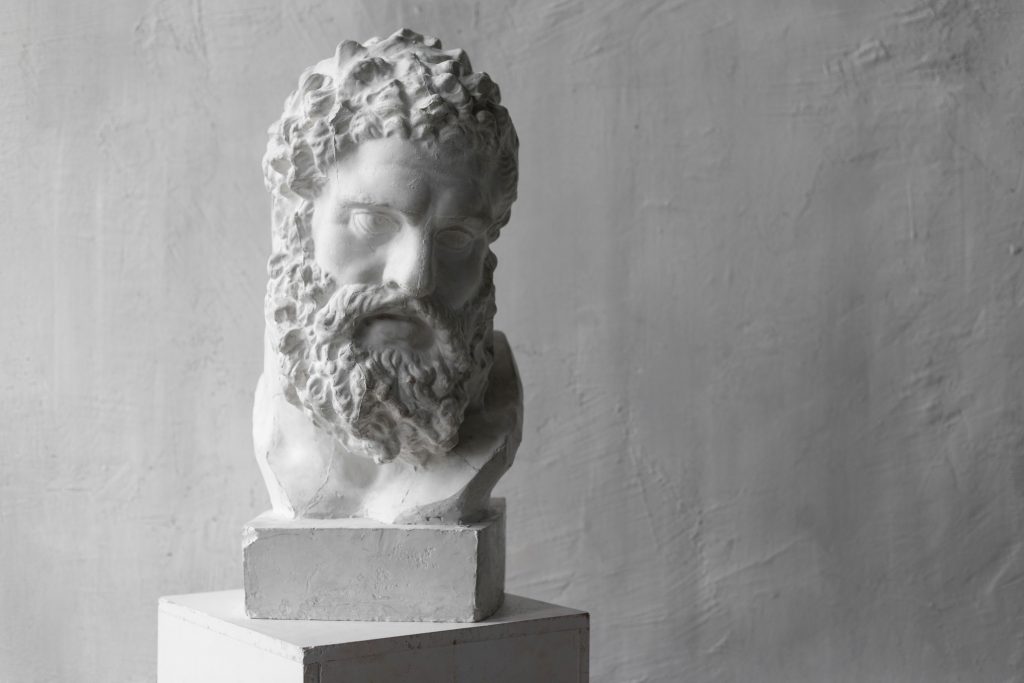
Eros and Psyche
The myth of Eros and Psyche is probably one of the best love stories in classical mythology. Eros, son of Aphrodite, was the personification of intense love desire and he was depicted throwing arrows to people in order to hit their heart and make them fall in love. Psyche, a beautiful maiden, personifies the human soul. In fact, she is the symbol of the soul purified by passions and misfortunes and who is, from now on, prepared to enjoy eternal happiness.
In the love story of Eros (Cupid in Latin) and Psyche (meaning “soul” in Greek), we can see the perseverance of a man even when he is possessed by passion and the effort of a woman to overcome many obstacles in order to achieve the happiness of love.
Leto, mother of Apollo and Artemis
Leto in ancient Greek myths was the representation of motherhood. Like every mother, she suffered a lot to give birth to her children and then to protect and raise them up in the proper way. Leto suffered many misfortunes because of her relationship with Zeus, which caused Hera’s jealousy and cursed Leto not to find a stable place on Earth to deliver her children. That is how Delos emerged, which was believed to be a floating island. Leto gave birth to Artemis and Apollo there and since then Delos became the sacred place of god Apollo.
Pandora, the first woman on Earth
The story of Pandora came into prominence in Theogony, the epic poem of Hesiod, written in the 8th century BC. The myth dates back to the first centuries of humanity, just after the Titanomachy, the Great War between the Titans and the Olympians. It is interesting to note that the reference to Pandora’s Box came only in the 16th century from Erasmus of Rotterdam. The bottom line is that the entire story about Pandora was fabricated. It may be considered as a misogynist stand that the creation of woman was the harbinger of all evil on this world.
Callisto, the constellation
The ancient Greeks used to explain things they couldn’t understand with myths. That is how they explained the creation of the world, natural phenomena or destructions, the existance of powers that could surpass human nature, and, in general, everything that bothered them. That way, when they were looking at the sky and were observing all these stars, they would wonder what had caused these stars and constellations to exist. In fact, many myths have been created to explain the existence of stars. The story of Callisto is such a myth, created for the sake of two beautiful constellations, the Ursa Major and the Ursa Minor.
Adonis and Aphrodite
Adonis was the deity of plants and rebirth. He is known as a god who was for ever youthful, the one who would live and die only to be reborn again. This cycle is repeated along time, without end. The cult of Adonis comprised of women, as it is evident from the 2,600-year-old remains found on the island of Lesvos.
The Athenian women planted the “gardens of Adonis” where the seeds would spring to life and then die to be reborn a few months later. The Festival of Adonis was celebrated in mid-summer when fennel and lettuce were harvested. Unfortunately, these plants would wither very quickly and the women would mourn their decline as the death of the youthful Adonis.
Phaethon and the Sun Chariot
According to the ancient myths, the Sun was put in a chariot and everyday God Helios would drive the chariot all along the sky. That is how the Sun would rise and set. Phaethon was the son the god Helios who secretely took the chariot one day to drive it. However, as he was young and inexperienced, he lost control of the horses and got killed.
Asclepius, the god of medicine
Asclepius was originally a mortal and later became the god of medicine and healing, according to the ancient Greeks. The myth of Asclepius is connected to the origins of medical science and the healing arts. His cult was particularly popular all over Greece and people from all Meditarranean countries used to come to his temples, named Asclepieion, to be cured. Remains these temples can be seen till today. His story is pretty interesting and is actually a story of punishment.
Apollo and Daphne
This charming myth talks about the platonic love of god Apollo for the beautiful nymph Daphne. It is said that Daphne was the first love of Apollo but unfortunately the girl never responded his love. It was not usual or possible for a nymph or a mortal woman in the Greek mythology to resist to the love of a god, but Daphne did so and in fact, she lost her life trying to escape this love.
Alcyone and Ceyx
The story of Alcyone and Ceyx is very touching and portrays the love that triumphs over tragedy. This young couple was so much in love that neither the gods nor death could set them apart. Alcyone followed her husband to the other life and did so with her free will. From this myth also derives a well-known phrase, the Halcyon Days.
Arachne, the spider woman
Arachne, her name meaning spider in Greek, was a beautiful woman that had a great talent in weaving. Everyone was amazed at her work and one day, Arachne boosted that she had a greater talent than goddess Athena herself. This was an offense towards the gods, which was a very serious and even deadly sin for the ancient Greeks. That is why goddess Athena transformed her into a spider to wave for all her life long.
Cadmus, the founder of Thebes
Cadmus is known as the founder and the first king of Thebes, a powerful town in the ancient times, close to Athens. He is also known as the man who brough the writing and the alphabet from the Phoenicians to the Greeks, and through the Greeks to the whole world. According to mythology, his life was long and adventurous. Everything started when his sister was abducted by Zeus, the chief of the gods. That is when he left his country to look for her. Although he probably didn’t find her at the end, the Fates had planned a great life for him.
Deucalion and Pyrrha
The story of Deucalion and Pyrrha resembles a lot to the Biblical story of Noah’s Ark. This is the version of the ancient Greeks in their attempt to purify the old world from its sins and give birth to a new race of human. The amazing thing is the similarities between the two stories, as both of them use a disastrous flood as a means to make the humankind extinct. The few people that are saved from the flood have managed to do so in a boat and many days after the rain had stopped did they manage to step on land.
Idas and Marpessa
The story of Idas and Marpessa is a myth of love. These two characters proved that love and eternal devotion cannot be conquered by sword, power, beauty or glory. Marpessa was a young maiden who some time in her life found herself in the need to choose her husband between a mortal and a god. What was her decision? Let’s look through the myth to find the answer.
The Danaides
The myth of Danaides is the story of fifty women who commit a horrible wrongdoing: guided by their father, they all kill their husbands on their wedding night! This great massacre was unbelievable, even for the bloody ancient Greek myths. It was a crime that both people and gods would punish. Indeed, the Danaides were punished for this after their death with a horrible and eternal torment.
The story of Danaides begins with the rivalry between the twin sons of Belus, the king of Egypt. Belus was believed to be a descendant of Io, a princess of Argos who lived most of her life in Egypt. Belus had two sons, Danaus and Aegyptus. When Belus died, he ordered Danaus king of Libya and Aegyptus, king of Arabia. The two brothers had regular rivalries over their kingdoms and where trying one to get the other’s land.
The most interesting fact about these brothers is their progeny. The myth says that Danaus had fifty daughters, known as the Danaides, from four different women, while Aegyptus had fifty sons. The intelligent Aegyptus wanted to get his sons married to the Danaides. For Aegyptus, these fifty marriages appeared as an easy route to acquire the properties of Danaus. Danaus soon understood the plan of his brother and was not willing to surrender his beautiful daughters to his nasty nephews. Guided by the gods and not intending to cause a war between them, he decided to give his kingdom to his brother and leave the country in search for another life. Danaus built a ship with fifty oars and fled to Greece with his fifty daughters.
The tragic myth of Niobe
The tragic tale of Niobe is one of the most memorable Greek myths, for Niobe’s story features a striking example of the consequences of hubris, a Greek term defined as arrogance or excessive pride. This myth was popular in ancient literature, poetry and art. Therefore, it is not a surprise that the legend of Niobe appears in one of our oldest and best sources for Greek myths, the Iliad of Homer.
The name giving of Athens
It is well-known that Athens was the most powerful and glorious town of ancient Greece. Its residents managed to develop a wonderful civilization that is admired till today. It is also known that the city got its name from Athena, the goddess of wisdom and courage. But how did Athens got its name? Here is a charming little story about the origin of the city’s name.
Religion in Greece
The religion of Greek people is an important aspect of Greek culture. The population in mainland Greece and the Greek islands is Christian Orthodox per 90%. The religion of the rest of the population is Muslims, Catholic, Jewish and other minorities. Greece and Russia are the only countries to have such a great proportion of the Orthodox population.
The Orthodox Church forms the third largest branch of Christianity, after the Roman Catholics and the Protestants. You will find below information about the history of Orthodox religion in Greece: the founders of the orthodox church, the Schism, the connection with the Greek nation, the separation with the state and other religions in Greece.
The Schism
In 1054 AD, Christianity was divided into Eastern and Western Church, the Orthodox and the Catholics. This division was called ” The Schism” and was the result of long disputes between the Pope of Rome and the Patriarch of Constantinople. The disputes referred to the celibacy of the clergy (Catholic priests had to remain unmarried, whereas the orthodox priests could marry before becoming ordained), receiving the Holy Communion and the wording of the Creed: for the Orthodox, the Holy Spirit proceeds from the Father, whereas Rome added and the Son (filioque). However, the largest problem between the two Churches was the demand of the Pope to have full control over the Eastern Patriarchs (of Constantinople, of Alexandria and of Antioch).
Orthodox Church and the Greek Nation
The Orthodox Church is strongly connected to the Greek Nation since the Byzantine times when the Patriarch of Constantinople had a strong power over the national matters. During the Ottoman rule, from 1453 to 1821, the Orthodox religion was an important element for the conservation and the definition of the Greek Nationality. During the several occupations, the Orthodox Church made a great effort to preserve the Greek language, culture, traditions, and the Orthodox faith. They managed to preserve the religious conscience and the feeling of affiliation.
Separation State – Church
Officially and like in all European countries, the Greek State and the Orthodox Church are separated. This separation is not written or regulated by the Constitution and the Greek Orthodox Church has great power in Greek society.
Other religions in Greece
As mentioned, 90% of the Greek population is Christian Orthodox. A percentage of less of 1% are Greek citizens of the Muslim religion, most people living in Thrace who were not affected by the population exchange of 1922 between the Greeks of Asia Minor and the Turks of Greece. The rest are Catholics (less than 1%), Jewish (7,500 people), Jehovah’s Witnesses, and others. Many Catholics live on the island of Syros and other islands the Cyclades, remain from the Venetian occupation in the Medieval times.





